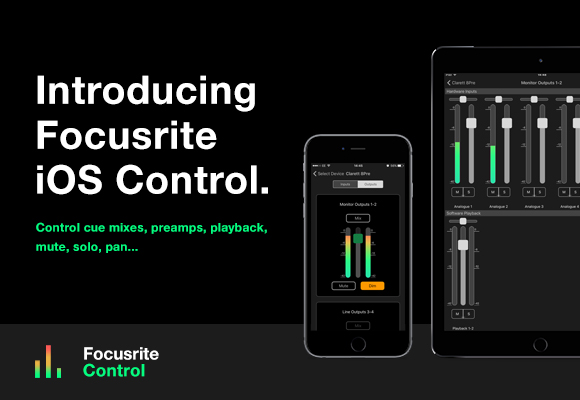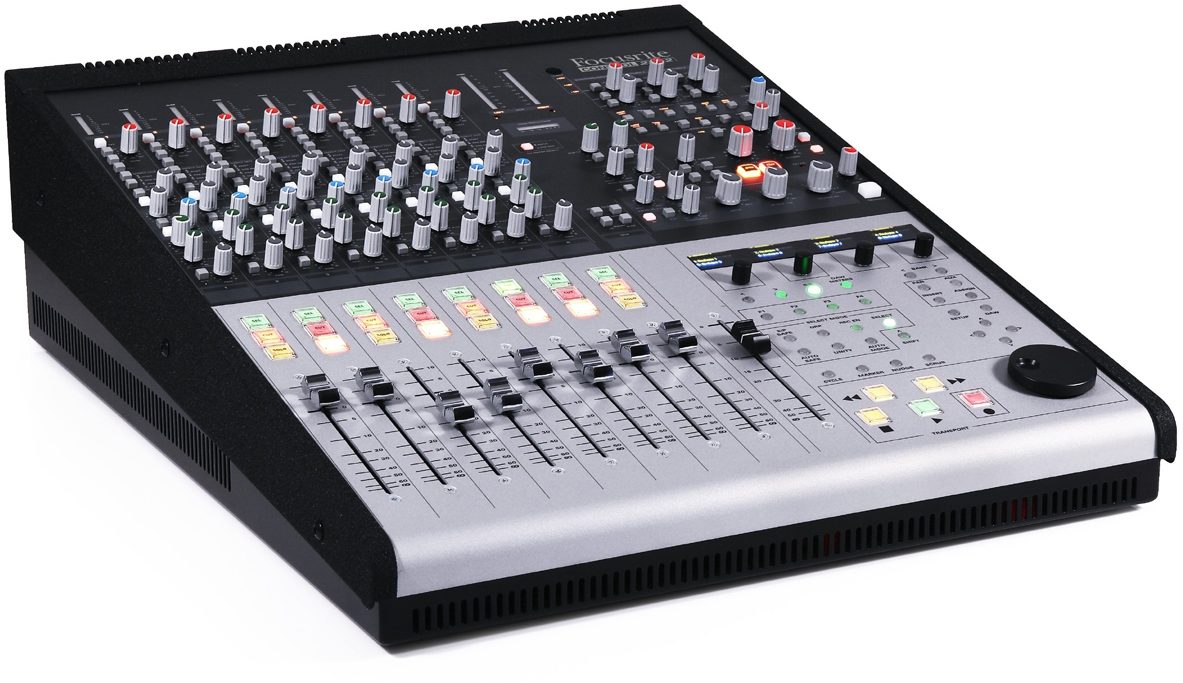Last year, I acquired a Focusrite Scarlett 4i4. The main purpose was to improve the quality of my live coding sessions, and also to allow me experiment with recording my own songs.
It was a pain from the moment I plugged this card into my laptop, until now.
As of today, I’m happy that I’m finally getting rid of it.
Allow me to explain how much of a disaster their approach is. Most USB digital audio interfaces are compatible with industry standards – they’re class compliant. That means they advertise features, inputs, outputs, etc, using a standard USB protocol.
Focusrite Control for iOS relies on a stable WiFi connection in order to communicate between your iDevice and your computer. If your interface isn't showing up when you try to use the app, or you're experiencing frequent disconnections, you may wish to check the following troubleshooting steps. Focusrite Control’s simple and intuitive interface will, in conjunction with the Digital Audio Workstation (DAW) of your preference, provide you with a highly versatile computer recording system. While we have designed Focusrite Control to be as intuitive and task-oriented as possible, all users. Focusrite decided they didn’t like hardware buttons. So they removed them, and switched to software-controlled features. For some reason that I’m yet to understand, Focusrite decided they wouldn’t use any standard protocol to advertise these features. So they invented a proprietary protocol only to control these features.
- Focusrite Scarlett 18i20 Audio Interface US: UK: CAN: Focusrite Audio Drivers: https.
- 00:00 What is Focusrite Control?00:38 Focusrite Control for Scarlett Solo and 2i200:58 Focusrite Control for Scarlett 4i4, 8i6, 18i8 and 18i2001:19 Speaker s.
Not Focusrite.


Focusrite decided they didn’t like hardware buttons. So they removed them, and switched to software-controlled features.
For some reason that I’m yet to understand, Focusrite decided they wouldn’t use any standard protocol to advertise these features. So they invented a proprietary protocol only to control these features. This protocol is only usable through their Focusrite Control software – which, as you might have guessed, is proprietary, and only runs on Windows and Mac.

Focusrite decided they didn’t want their hardware to work on Linux, so not even a minimal documentation about routing was published. That makes it even harder for the heroes trying to reverse-engineer their cards.
I’ve contacted them and shared my thoughts about it. Their response, while clear and unambiguous, is still disappointing:
Focusrite clearly states on their website that Linux is not supported. And that’s okay, very few digital audio interface manufacturers claim that. But that wouldn’t be a problem if their hardware were at least class compliant. They are not. With that, there is enough evidence that Focusrite is hostile to Linux users, and we should not support their business practices until they switch this stance.
Focusrite Control Software

Control 2802 is a super-flexible analogue console and an Ethernet-based DAW control surface in one. Precision analogue audio architecture delivers a superb, big studio sound, while Control 2802 demonstrates extraordinarily versatile routing capability, with cues and auxes available to provide up to 32 mix inputs and a DAW-integrated two-part in-line-style channel. Ethernet-connected HUI control layer allows DAW operation right from the console. There’s no other small-format console quite like Control 2802: nothing sounds like it, and nothing offers this level of design sophistication, flexibility and control.
Product specialist Adrian Hogg takes you through a quick round-up of all the key features on the Control 2802.
With an array of superb-quality analogue features packed into its compact frame, Focusrite Control 2802 includes capabilities you would expect to find only on large-format consoles. At the front end, eight Class-A microphone preamps deliver clear, transparent performance. Then at its heart is a powerful summing mixer handling up to 32 simultaneous inputs with ultra-low distortion, excellent dynamic range and a frequency response wider than the human ear. There’s a punchy master bus compressor featuring parallel compression for versatile control of dynamics for your stereo mix – or any other pair of channels. High-end analogue design characterises the 2802 – implemented with similarly uncompromised components and build quality throughout.
You can control several major digital audio workstations with the Control 2802. Dual Layer Control Technology lets you flip from analogue fader layer to DAW layer in an instant, accessing fully integrated control of DAW faders, auxes, plug-ins, automation, project navigation – and more. With Ethernet-based control, your favourite music software is always at your fingertips.
The Control 2802’s motorised 100mm analogue and DAW control faders can both be fully automated. Easily adjust DAW channel auxes, inserts and groups within Pro Tools, Logic, Cubase and Nuendo via a HUI interface. Four multi-function encoders give you precise control while OLED screens provide detailed information on mix elements. Combined with dedicated transport controls, that means more time getting your sound just right, and less time staring at a screen.
Focusrite
In the box you will find the Focusrite Midnight plug-in suite. Modelled on original Focusrite hardware designs, these plug-ins allow you to add compression and EQ, helping you take your mix to the next level. Of course the plug-ins can be controlled and assigned to channels from the comfort and convenience of the Control 2802, so there's no need to grab the mouse!
Focusrite Control Direct Monitoring
That’s it in a nutshell: the Focusrite Control 2802 brings together a compact analogue mixing console with large-format console quality, and a superb, automated, multi-DAW control surface – plus the ability to flip between the two in an instant. The Control 2802 from Focusrite; in control of your sound.
